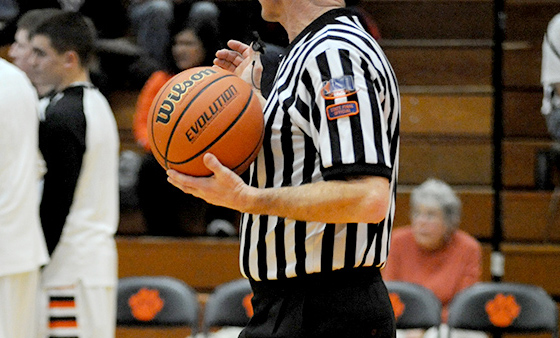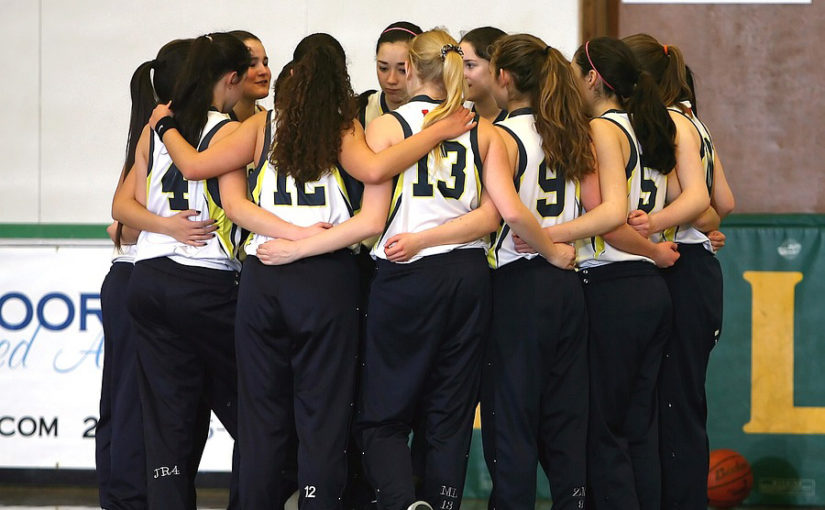16 lessons for guiding non-teacher coaches
As more faculty members age and teachers give up coaching responsibilities, athletic administrators are faced with a staff comprised of fewer coaches from within the building. The exodus of teachers from coaching may also be influenced and exacerbated by misguided, problematic parents. But for whatever reason, 50 to 60 percent of coaches may now be non-teachers in many districts.
 Since non-teacher coaches aren’t in the building to interact with the athletes, they may not possess a real understanding of the workings and climate of a school. And most likely, community coaches also don’t understand the basic tenets of education-based athletes.
Since non-teacher coaches aren’t in the building to interact with the athletes, they may not possess a real understanding of the workings and climate of a school. And most likely, community coaches also don’t understand the basic tenets of education-based athletes.
The following are several ideas in order to more effectively guide your non-teacher coaches.
1. Meet individually, or as a group of new non-teacher coaches, and explain what hazing and bullying involves and, more importantly, what steps have to be taken to prevent them. Also, explain the steps that coaches must take in order to report suspected abuse of students. These topics are usually covered annually during faculty in-service meetings.
2. Provide the do’s and don’ts for using social media with student-athletes. While it may be suitable to post schedule changes on Facebook or send a reminder e-mail to the entire team, being a social media “friend” of a student-athlete or communicating one-on-one is not a wise, prudent thing to do.
3. Explain that student records and the results in the classroom are confidential. In academic settings, comparisons are not made between students and the same approach needs to be employed in athletics. Coaches can discuss with athletes what they must do to improve, but only as an individual and not referring to other players.
4. Cover the protocols for dealing with injured athletes and the chain of command that has to be followed before they can return to play. Athletic trainers make this important decision in consultation with the physician. Coaches and parents cannot influence or bypass these procedures.
5. Provide non-teacher coaches with guidelines and help with how to communicate with parents. This should include the role that parents play along with when and how to deal with questions and complaints. While coaches don’t have to agree with or automatically change based upon parental complaints, they do have to respond to phone calls, email messages or meet with parents in a polite and professional manner.
6. Emphasize that all coaches, especially non-teacher coaches, have to check their email. Non-teacher coaches should also check their school mailbox daily for necessary paperwork, and you should suggest that they stop into the athletic office prior to going to the locker room or practice everyday to check for any last minute updates.
7. Outline the steps that coaches have to follow after a contest. Whether it’s a win or loss, coaches have to report their scores to the local press, turn in officials’ payment vouchers to the athletic administrator, supervise the locker room and many other responsibilities. Many of these expectations may be new and uncommon for community coaches.
8. Cover the school’s and league’s sportsmanship expectations for coaches. In education-based athletics, coaches are role models and they have to set a positive example for their players and fans. You can’t assume that non-teacher coaches understand this important responsibility.
 9. Explain that it is vital that coaches alert you with regard to any problems that may have occurred at practice sessions or in games. This should be done as soon as possible and, with the availability of cell phones and email, coaches should be able to keep the athletic administrator informed and prevent you from being blindsided.
9. Explain that it is vital that coaches alert you with regard to any problems that may have occurred at practice sessions or in games. This should be done as soon as possible and, with the availability of cell phones and email, coaches should be able to keep the athletic administrator informed and prevent you from being blindsided.
10. Review standards for interacting with student-athletes. While a coach may occasionally yell during practices or games, it cannot be abusive and constant, and no inappropriate language can be used. In an educational setting, coaches need to understand the developmental process of young people and be nurturing and positive. The old school, in-your-face technique of grabbing an athlete to get their attention is simply unacceptable.
11. Explain that inappropriate relationships with athletes and assistant coaches cannot be allowed, and provide some guidelines to help prevent dangerous situations. Particularly when dealing with athletes of the opposite sex, try to avoid settings — a closed door meeting, driving an athlete home, etc.— that could be interpreted as inappropriate. Also, in terms of liability, a coach should not drive athletes home after practices or a game.
12. Make sure that non-teacher coaches understand the procedures that must be followed for team travel. Most districts require a coach to accompany the team on a bonded carrier, which is often a school bus. It is also important to explain the protocols that are in place if there is inclement weather and school is either dismissed early or canceled for the day.
13. Forward email messages and memos from the principal, guidance office and other pertinent information concerning the school day and the upcoming schedule. This information can provide the non-teacher with a little background about the school and what athletes will be going through during the day.
14. Suggest that non-teacher coaches attend a school play, concert or another contest in which one or more of their athletes might be involved. Attendance at these events will provide a better overview of the school, and it may offer more insight into a coach’s student-athletes.
15. Take time to discuss with a non-teacher coach how his or her sport fits into the total athletic program and the school’s mission. While it is natural for a coach to have passion and perhaps tunnel vision for their respective sport, all teams are equally important in your program. This means no one team gets preferential treatment and that a sharing, caring and supportive approach with athletes and facilities is needed by all coaches.
16. There should be little doubt that coaches within the building, providing they are quality ones, are ideal and that guiding non-teacher coaches takes more work. However, the better job that athletic administrators do in finding strategies for this segment of their staff the more it will benefit the athletes and the program, creating fewer headaches for the athletic director.
One thought on “16 lessons for guiding non-teacher coaches”
Leave a Reply
You must be logged in to post a comment.






In 2019 it is also important that walk-on coaches understand the procedures associated with school security plans in emergency situations. Administrative contact information for such emergencies should be provided as well. Providing these coaches an e-file and a hard copy binder with all this information is also recommended. Have your coaches sign a document confirming that they have read the material and have reviewed it in person with the administration. Each entry should be initialed by both the administrative representative and the coach. Place the most important procedures at the beginning and directives such as attending other school activities near the end.